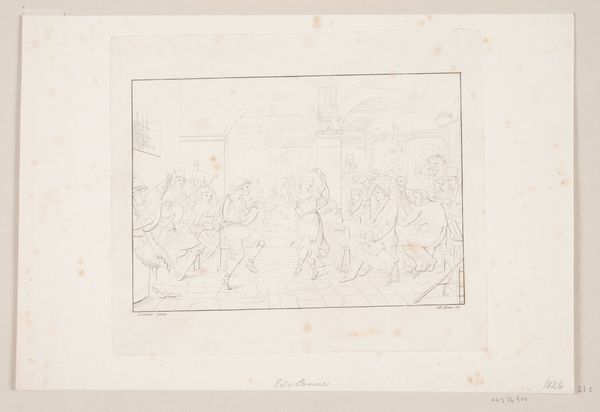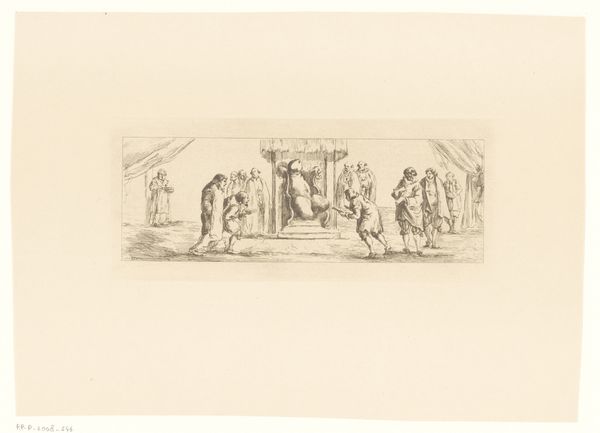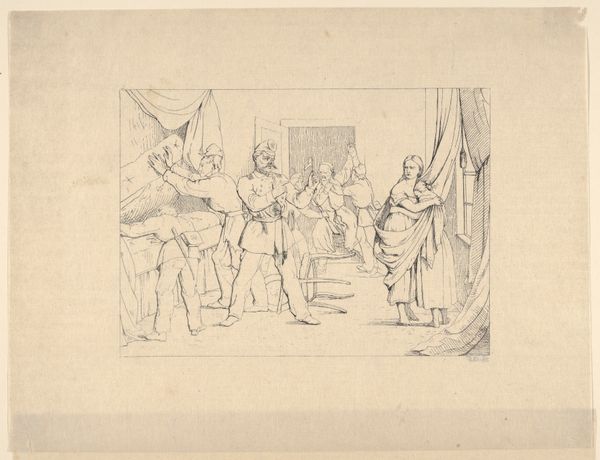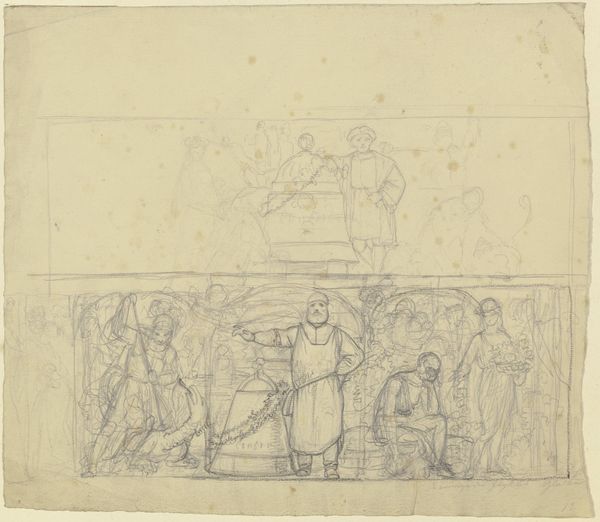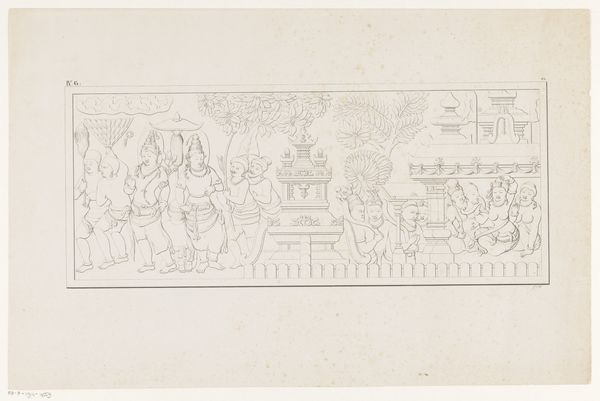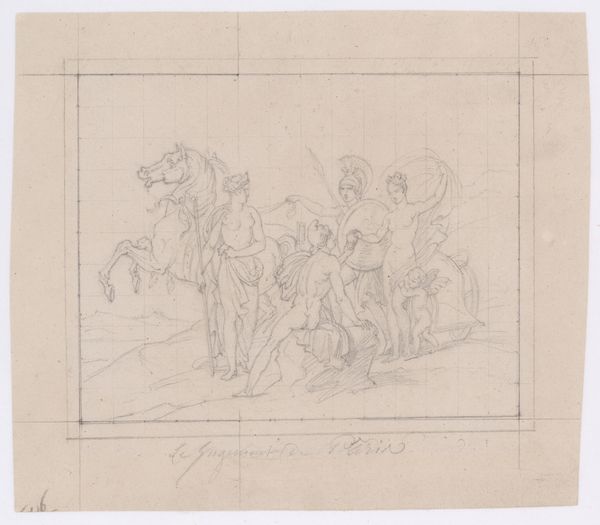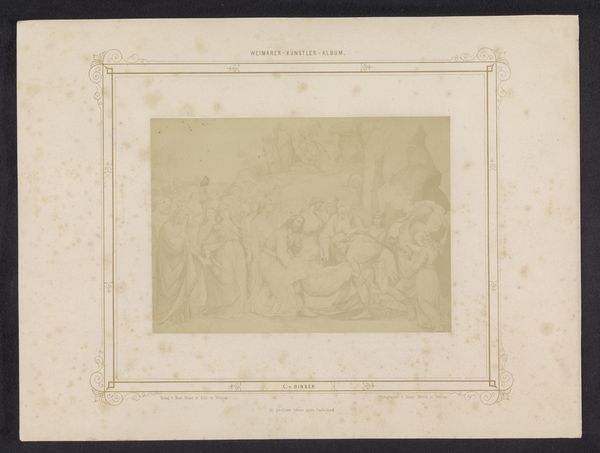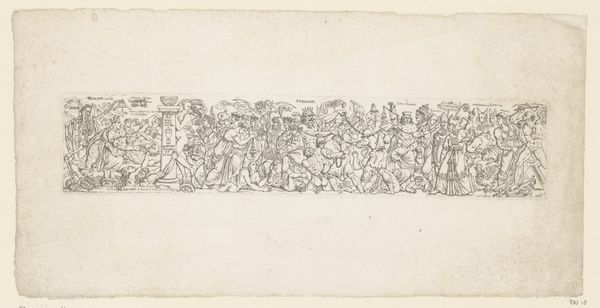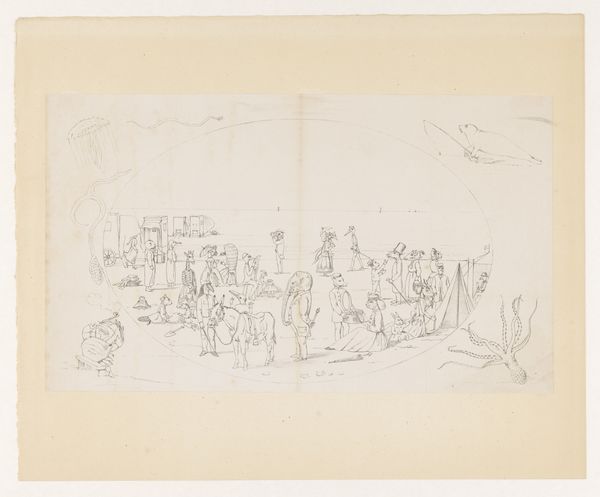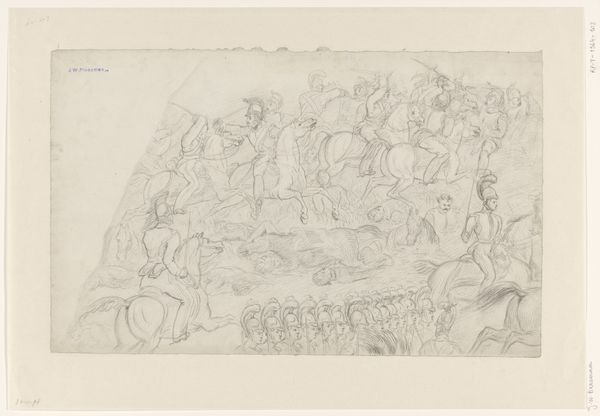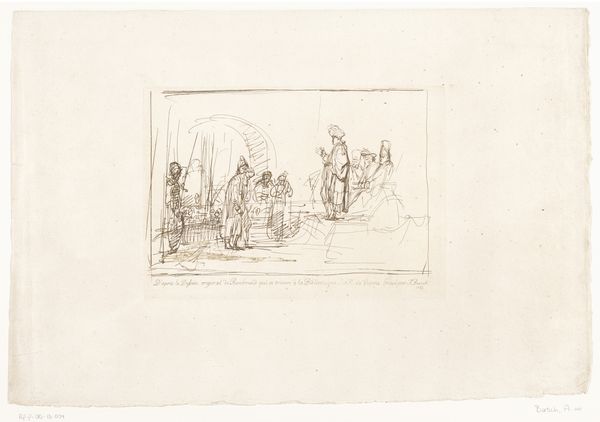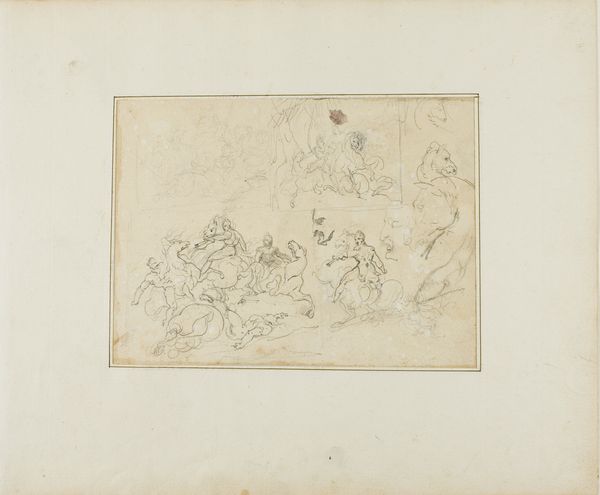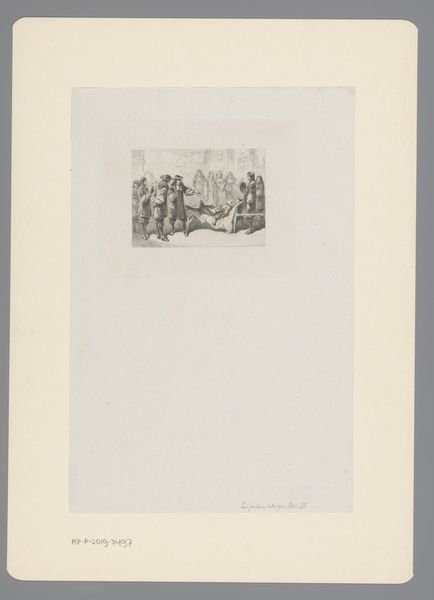
Reliëf met Boeddhistische goden, mogelijk van de tempel Candi Mendut 1836 - 1858
0:00
0:00
drawing, paper, ink
#
drawing
#
asian-art
#
figuration
#
paper
#
ink
#
line
Dimensions: height 345 mm, width 430 mm
Copyright: Rijks Museum: Open Domain
Editor: Here we have “Relief with Buddhist Gods, Possibly from the Temple Candi Mendut,” dating from between 1836 and 1858, by Andries Wiemans Cz. It’s an ink drawing on paper. I’m really drawn to the almost mechanical repetition of figures, it feels very stylized. What catches your eye when you look at this? Curator: I see an interesting tension here. We have this detailed figuration achieved through what seems to be quite painstaking line work. How does the context of its production—the materials used, the repetitive process—affect how we interpret these depictions of deities and processions? Editor: That's a good question! I hadn’t really considered the repetitive process as having meaning. Curator: Think about the labor involved. Is it purely devotional, or does it engage with contemporary methods of reproduction and documentation common to this time? Were similar images produced via printing techniques? Editor: I see your point. The precise lines do almost suggest an attempt at mass production. How does this potential interplay between art and early industrial methods complicate our understanding of religious iconography? Curator: It makes us think about art as a product, about its value determined by not only aesthetic qualities but also by the labor and resources invested in its making. Also consider who had access to paper, ink, and artistic training during this period in Java, Indonesia? These factors shape our understanding of its cultural context and its possible meanings. Editor: That definitely changes my initial interpretation! It’s not just a devotional drawing, it's speaking to broader socio-economic conditions too. I will be sure to consider the means of production as a component of this and other artwork moving forward. Curator: Exactly! Considering these aspects allows us to go beyond the surface and really see how art reflects and interacts with the world around it.
Comments
No comments
Be the first to comment and join the conversation on the ultimate creative platform.
